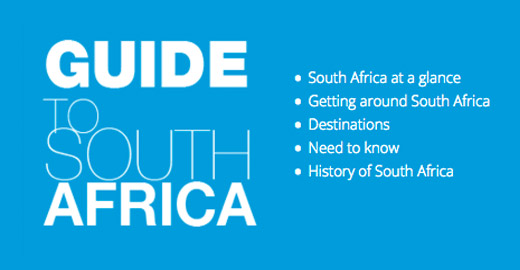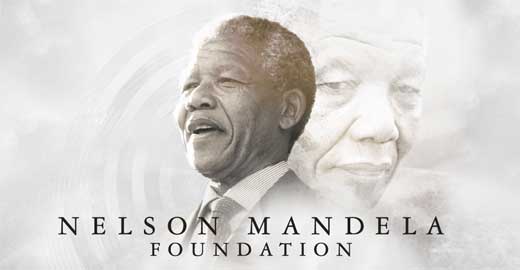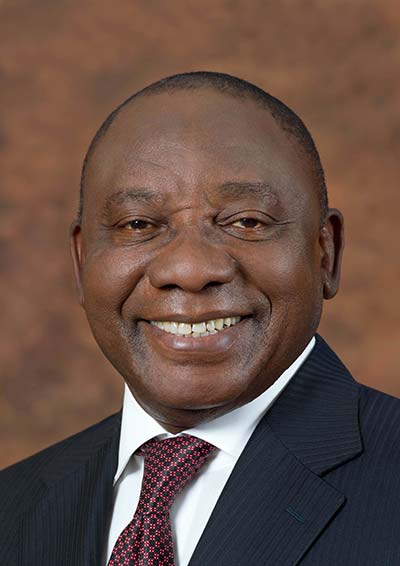 Eastern Cape
Eastern Cape
Wild and beautiful: explore the Eastern Cape
The Eastern Cape, South Africa, is a place of rugged beauty. Its pristine coastline, virgin bush and sub-tropical forests exist as though untouched by time. It’s the home of Africa’s Big Five and South African surfing, and the birthplace of Nelson Mandela. It boasts many natural, historical and cultural attractions and activities.
Travel tips & Planning info
How to get here
Fly to Port Elizabeth International Airport: 5 South African airlines offer domestic flights to Port Elizabeth from all other major local cities, or hire a car from your current South African location.
Best time to visit
The months between September and May offer the best travelling weather.
Where to stay
The Eastern Cape offers a wide range of accommodation, from budget-friendly back-packer accommodation to five star luxury getaways.
What to eat
The Eastern Cape is renowned for its fresh seafood, so a seafood platter or two is a must. Its cultural and heritage routes also include visits to traditional African villages, where authentic African cuisine can be enjoyed.
What’s happening
The Eastern Cape’s Nelson Mandela Bay was a host city of the 2010 FIFA Soccer World Cup, and hosted 8 World Cup matches, including a quarter-final. Tourism Month takes place during September each year, with a range of visitor-oriented activities being held across the province. Five-day painting and drawing holidays are held in the Karoo between April and June, and August and October each year. Jeffrey’s Bay hosts the Billabong Pro international surfing event every July.
 Free State
Free State
Big Sky Country
Free State, South Africa, is a province filled with historical wealth and beauty: from wars and gold rushes to beautiful landscapes that vary from towering Sandstone Mountains to open plains. It is a melting pot of cultures and offers an authentic South African tourism experience.
Travel tips & planning info
Free State Tourism
Best time to visit
Spring to autumn (September to April). Summer days get very hot, while winter days are mild, with cold evenings. Snow regularly falls on the eastern highlands.
How to get around
Fly direct from any of South Africa’s major cities to Bloemfontein Airport. If you’re driving; from Johannesburg and Cape Town take the N1 south and north respectively to Bloemfontein. From Durban, take the N3 out of KwaZulu Natal, and pick up the N5 at Harrismith to Bloemfontein.
In order to cover the large stretches of territory required, getting around by car is recommended.
Where to stay
The region offers a full range of accommodation from backpackers and B&B’s to hotels and guest houses.
What to eat
Traditional boerekos (farm-style food) and potjiekos (pot stew) in most towns and villages; authentic African cuisine at the many African cultural villages; the Free State’s famed corn on the cob and juicy cherries.
What’s happening
Philippolis Witblits Festival in June (a festival featuring traditional home-brewed alcoholic spirits); NAMPO Farm Show (agricultural show) at Bothaville in May; the Bloemfontein Show (agricultural and entertainment festival) at Bloemfontein in April; the Free State Food Fair and Macufe Mangaung African Cultural Festival, both at Bloemfontein in October; the Cherry Festival at Ficksburg in November.
Tour Winnie Mandela House in Majwemasoeu; the region’s various wine cellars; the self-drive tourism routes (Battlefields, Friendly N6, Diamond and Wine, BBT Heritage, Maloti and Goldfields); the National Museum in Bloemfontein; the Basotho Cultural Village; the Golden Gate Highlands National Park.
 Gauteng
Gauteng
The pulse of South Africa
Gauteng is a dynamic province. Considered the commercial heart of the country, its energy and vibe are tangible from the moment you arrive. From historical and cultural attractions that speak of the country’s turbulent past to world-class cities that are distinctly African, Gauteng has much to offer visitors.
How to get there:
Fly direct from any of South Africa’s major cities into OR Tambo International Airport at Johannesburg.
If you’re driving, from Durban take the N3 motorway to Johannesburg and from Cape Town take the N1 motorway to Johannesburg.
Best time to visit:
Gauteng is an all-year-round destination. Spring to autumn (September to May) is beautiful and warm, with hot summer days that usually bring rain. Winter days are mild, but morning and evenings very cold.
Where to stay:
The region offers a full range of accommodation from backpackers and B&B’s to hotels and guest houses.
What to eat:
There is a range of foods to eat in Gauteng, from authentic African cuisine to boerekos (farm-style food). You will also find themed restaurants offering fare from around the world, most notably Indian, Chinese, Greek, Portuguese and Italian which reflect the influences of these cultures in South Africa.
What’s happening:
Freedom Struggle tours e.g. including Hector Pieterson Museum and Nelson Mandela House in Soweto; Johannesburg CBD tours incl. Origin’s Centre Museum, Apartheid Museum, Museum Afrika, Newtown and Constitution Hill; Cradle of Humankind tours including e.g. Sterkfontein Caves, Maropeng Visitors Centre, Wonder Cave, African arts and crafts at shopping centers and flea markets around the province.
 Limpopo
Limpopo
Big game country
Limpopo South Africa is a wildlife destination with plenty game and nature reserves including the northern Kruger National Park. Apart from game viewing and birding, it is home to the remains of ancient cultures as well as the intriguing Venda culture, steeped in myth and legend.
How to get here
Fly direct from Johannesburg to Polokwane.
If you’re driving, from Johannesburg take the N1 north motorway direct to Polokwane.
By road, take the N1 motorway from Johannesburg and continue north to Polokwane. From Durban, either take the N3 motorway to Johannesburg and then pick up the N1 north to Polokwane, or take the N3 to Ladysmith and then pick up the N11 to Polokwane.
Best time to visit
Limpopo is an all-year-round destination due to its sub-tropical climate. Summer (October to February) can get very hot in some regions.
Around the area
The cultural museums of Bakone Malapa at Polokwane and the Tsonga Open-air Museum at Tzaneen; Modjadji Cycad Reserve; Mapungubwe World Heritage Site and National Park; Soutpansberg and Waterberg; Kruger National Park; Myths and Legends of the Venda culture; hot air balloon flights over Hoedspruit; Amarula Lapa; Ribolla Open Africa Route; Waterberg Rhino Museum; African Ivory Route.
Where to stay
The region offers a full range of accommodation from backpackers and B&B’s to hotels and guest houses.
What to eat
Enjoy traditional South African cuisine at game reserves around the province and authentic African fare at the various cultural villages. Drink Amarula Cream.
What’s happening
Cherry Blossom Festival at Haenertsburg, Magoebaskloof in April; Ellisras Bushveld Festival at Lephalele in July; Hoedspruit Airshow and Game Festival at Hoedspruit in July.
Best buys
There are hundreds of curios and keepsakes to look out for in Limpopo, from Big Five-inspired gifts in the province’s game reserves to local arts and crafts. Try the Ribolla Open Africa Route for stunning, locally-made products.
 KwaZulu-Natal
KwaZulu-Natal
Beaches, battlefields and mountain breakaways.
KwaZulu-Natal, South Africa, is a place of great scenic beauty. From mountains and midlands to pristine beaches, its natural splendor combined with a rich culture and historical heritage, make the province hard to beat.
How to get here
Fly from any of South Africa’s major cities to King Shaka International Airport.
If you’re driving, from Johannesburg take the N3 freeway direct to Durban. From Cape Town, take the N2 freeway to Durban.
Best time to visit
KwaZulu-Natal is an all-year-round destination, due to its warm climate. The coastal regions have hot, humid summers with high rainfall. Inland, summers are warm and winters mild, while around the Drakensberg Mountains, winters are cold with frequent snowfalls.
Around the area
Midlands Meander in the Natal Midlands; uKhahlamba-Drakensberg; Aliwal Shoal, Oribi Gorge and Lighthouse Tours on the South Coast; uShaka Marine World in Durban; rickshaw ride on Durban beachfront; iSimangaliso Wetland Park; bird watching in Zululand; game reserves of the Elephant Coast; the Battlefields routes; Natal Sharks Board; Freedom Route; Indian heritage tour.
Where to stay
The region offers a full range of accommodation from backpackers and B&B’s to hotels and guest houses.
What to eat
Famous Durban curries and bunny chow (a bread and curry dish); traditional Zulu fare at cultural villages; traditional South African cuisine at the game reserves.
What’s happening
Splashy Fen Music Festival in the Drakensberg in April; Fort Nottingham Highland Gathering in the Natal Midlands in May; annual sardine run in May (check); Midlands Meander Slow Food Festival in the Natal Midlands in June; Durban July Horse Race in Durban during July; International Film Festival in Durban during July/August.
Best buys
Everything Indian including spices at the Victoria Street Market; Zulu crafts and artwork at the Durban Beachfront Market and at cultural villages around the province; local art, crafts and homemade goodies on the Midlands Meander.
 Mpumalanga
Mpumalanga
Canyons, caves and countless wildlife
The Mpumalanga province is dominated by the Blyde River Canyon – the world’s third-deepest gorge; the Sudwala Caves – the world’s oldest caves; and the Kruger National Park – arguably the world’s most famous wildlife sanctuary. Yet it is South Africa’s second-smallest province.
How to get here
Mpumalanga has air and rail links to all of South Africa’s main cities. It is also easily reached by road from neighboring provinces.
Hire a car or take an organized tour.
Best time to visit
Summer is hot, winters mild to cold. For game viewing, winter is best, though spring brings color and is the birthing season for most wildlife in the region.
Where to stay
The region offers a full range of accommodation from backpackers and B&B’s to hotels and guest houses.
What to eat
Enjoy traditional South African cuisine.
What’s happening
Photographic opportunities second to none, including but not limited to: Bourke’s Luck Potholes; God’s Window; Three Rondavels and the Blyde River Canyon.
A guided tour of the Sudwala Caves is a treat, as is a historical tour of the quaint gold rush town of Pilgrim’s Rest.
 North West
North West
Home of game and gambling
The North West province is home to 2 premier game reserves housing the Big 5, the Vredefort Dome World Heritage Site, the Taung Heritage Site, The Lost City and Valley of the Waves playground, a variety of adventure-sport destinations and an underwater cave-diving experience.
How to get here
The North West province has air and rail links with all major South African cities. It is also easy to drive there from neighboring provinces.
Around the area
Vredefort Dome World Heritage Site; Taung Heritage Site; Wondergat; Magaliesberg; Hartbeespoort Dam; Pilanesberg National Park; Madikwe Game Reserve; The Lost City; Sun City
How to get around
The road network is extensive and well-maintained, so driving yourself around is easy. Alternatively, opt for a guided tour by bus or mini-van.
Length of stay
A weekend or more, depending on how much you wish to explore.
What to pack
Always pack plenty of sun block and a hat. Good walking shoes or hiking boots are also a must for those who prefer to explore on foot.
 Northern Cape
Northern Cape
A land of wild flowers, wildlife and diamonds
If you love wide open spaces, wild flowers or Africa’s big cats, you’ll love South Africa’s Northern Cape Province. Among its many attractions, the Northern Cape is home to one of the world’s most important diamond mining towns, most impressive natural floral display, and famous black-maned lions.
How to get here
Best is to use Kimberley as a starting point to explore the Northern Cape. Kimberley has direct air links to Cape Town and Johannesburg.
To explore the Northern Cape at your leisure, it is advisable to hire a car. Be prepared for long trips though: the Northern Cape is a vast area and it can take many hours to travel between destinations.
Best time to visit
The Northern Cape is a semi-arid region with little rainfall in summer. The weather conditions are extremely cold in winter and extremely hot in summer. Factor this into your planning.
Where to stay
The region offers a full range of accommodation from backpackers and B&B’s to hotels and guest houses.
What to eat
Enjoy traditional South African cuisine.
What’s happening
Pella Mission is truly in the middle of nowhere. Approximately 150km from Springbok, Pella boasts a striking yellow cathedral that was built by French missionaries in the late 1880’s.
 Western Cape
Western Cape
History, heritage and heaps to do
In the Western Cape you will discover world-class wines, wonderful whale watching, contrasting landscapes, ample adventure options, as well as the magic of the Indian and Atlantic Oceans, which meet at Africa’s most southerly point.
How to get here
You can fly directly to Cape Town International Airport from most major airports around the world. The city is also linked by rail and air to the rest of South Africa.
Public transport in Cape Town is excellent, but hiring your own vehicle allows you to explore at your own pace.
specialize in fresh seafood such as fish, mussels, crayfish and calamari. Cape Town and the nearby wine lands boast many of the country’s best restaurants.
Best time to visit
Any time of year though it will depend on what you plan to do and see: summers are warm and dry; winter is cooler and wet.
Around the area
Coastal towns in the Western Cape
Where to stay
There are accommodation options to suit all tastes and needs.





